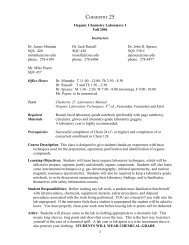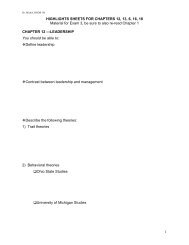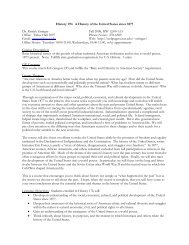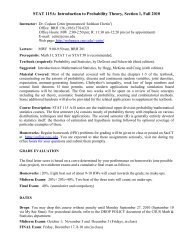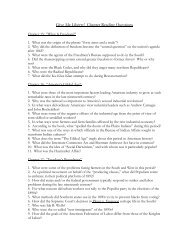final text
final text
final text
Create successful ePaper yourself
Turn your PDF publications into a flip-book with our unique Google optimized e-Paper software.
19used to characterize the asymmetric epoxide. A peak corresponding to a singlecarbon that is split into two close peaks indicates that a mixture of diastereomers ispresent. The height of each peak would give an indication of the ratio ofdiastereomers present.A review of literature showed that this is the first to attempt toasymmetrically synthesize the California Red Scale pheromone by use ofJacobsen’s catalyst.Anderson in 1979 published the first synthesis of the California Red Scalepheromone. 6 His method used (3S) citronellol as starting material and employedthe use of m-chloroperoxybenzoic acid as the reagent for epoxidation. Andersonsynthesized a mixture of diastereomers at C 6 and then proceeded to separate thediastereomers by High Performance Liquid Chromatography (HPLC).Baudouy in 1987 synthesized the California Red Scale pheromoneenantioselectively using trans (-)-dihydrocarvone as starting material. 23 Thisstarting material already has the correct configuration at C 3 and C 6 . The problemfor Baudouy was the preservation of both chiral centers during the synthesis of thenecessary butenyl and acetate groups. This was accomplished by theregioselective ozonolysis of the (-)-dihydrocarvone to allow for preservation ofboth chiral centers in the <strong>final</strong> pheromone product.Becker in 1988 published the first enantioselective synthesis of theCalifornia Red Scale pheromone. 24 (R)- Limolene was used as starting material.In Becker’s method, the correct C 6 configuration is already in place by using (R) –Limolene. The problem for Becker was the synthesis of the correct C 3stereochemistry. A mixture of diastereomers at C 3 resulted in the steps thatfollowed.



